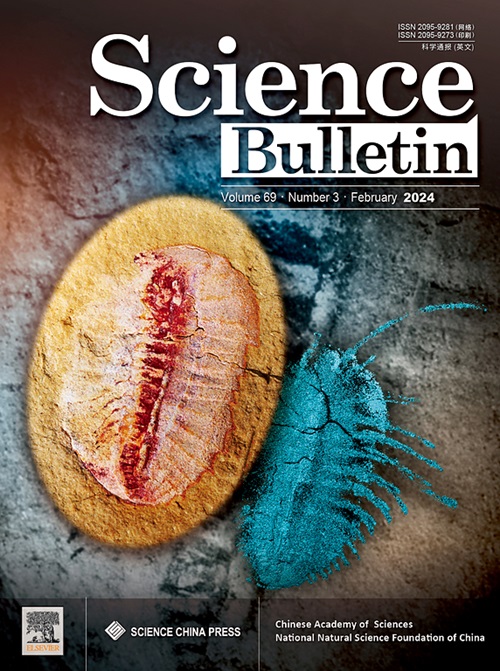Steering CO2 electroreduction to hydrocarbons over 2D thiol-based conductive metal-organic framework
IF 18.8
1区 综合性期刊
Q1 MULTIDISCIPLINARY SCIENCES
引用次数: 0
Abstract
Almost all of CuxS compounds only produce the simple two-electron transferred products CO and HCOOH but it remains a large challenge to obtain the multiple-electron transferred hydrocarbon products in electrocatalytic CO2 reduction reaction (CO2RR). Moreover, identifying the distinct contributions of S atoms to catalysis, particularly for catalytic activity and product selectivity in electrocatalytic CO2RR, remains a challenging task. Herein, we introduce a model catalyst based on a conductive two-dimensional metal-organic framework with defined Cu-S4 active sites, named Cu3(THT)2 (THT = 2,3,6,7,10,11-hexathiotriphenylene) for CO2RR. Unlike the precursor catalyst Cu3(HITP)2 with Cu-N4 motifs that predominantly produce common two-electron transferred product CO (40% selectivity), Cu3(THT)2 shifts the primary product to deep reduction product CH4. At −1.4 V versus the reversible hydrogen electrode (RHE), Cu3(THT)2 achieves a Faradaic efficiency of 63.5% for CH4 and the current density reaches a high value of −298.3 mA cm−2. Theoretical studies indicate that the electron-rich Cu-S4 sites stabilize and activate the key intermediate *CO more effectively than Cu-N4 sites. Furthermore, S atoms can accept electrons and form weak S···O interactions with *CO, providing additional stabilization for *CO. This study is the first to show that non-metallic S centers around catalytic metal sites can significantly enhance and tune product selectivity in CO2RR.

在二维硫醇基导电金属有机框架上,将二氧化碳电还原为碳氢化合物。
几乎所有CuxS化合物都只产生简单的双电子转移产物CO和HCOOH,但在电催化CO2还原反应(CO2RR)中获得多电子转移的烃产物仍然是一个很大的挑战。此外,确定S原子对催化的独特贡献,特别是对电催化CO2RR的催化活性和产物选择性的贡献,仍然是一项具有挑战性的任务。在此,我们引入了一种基于导电二维金属-有机框架的模型催化剂,具有明确的Cu-S4活性位点,命名为Cu3(THT)2 (THT = 2,3,6,7,10,11-六硫三苯基)。Cu3(THT)2与Cu-N4基序的前驱体催化剂Cu3(HITP)2不同,前者主要产生常见的双电子转移产物CO(选择性为40%),后者将初级产物转化为深度还原产物CH4。在-1.4 V时,Cu3(THT)2相对于可逆氢电极(RHE), CH4的法拉第效率达到63.5%,电流密度达到-298.3 mA cm-2的高值。理论研究表明,富电子Cu-S4位点比Cu-N4位点更有效地稳定和激活关键中间体*CO。此外,S原子可以接受电子并与*CO形成弱S··O相互作用,为*CO提供额外的稳定性。这项研究首次表明,在催化金属位点周围的非金属S中心可以显著增强和调节CO2RR中的产物选择性。
本文章由计算机程序翻译,如有差异,请以英文原文为准。
求助全文
约1分钟内获得全文
求助全文
来源期刊

Science Bulletin
MULTIDISCIPLINARY SCIENCES-
CiteScore
24.60
自引率
2.10%
发文量
8092
期刊介绍:
Science Bulletin (Sci. Bull., formerly known as Chinese Science Bulletin) is a multidisciplinary academic journal supervised by the Chinese Academy of Sciences (CAS) and co-sponsored by the CAS and the National Natural Science Foundation of China (NSFC). Sci. Bull. is a semi-monthly international journal publishing high-caliber peer-reviewed research on a broad range of natural sciences and high-tech fields on the basis of its originality, scientific significance and whether it is of general interest. In addition, we are committed to serving the scientific community with immediate, authoritative news and valuable insights into upcoming trends around the globe.
 求助内容:
求助内容: 应助结果提醒方式:
应助结果提醒方式:


